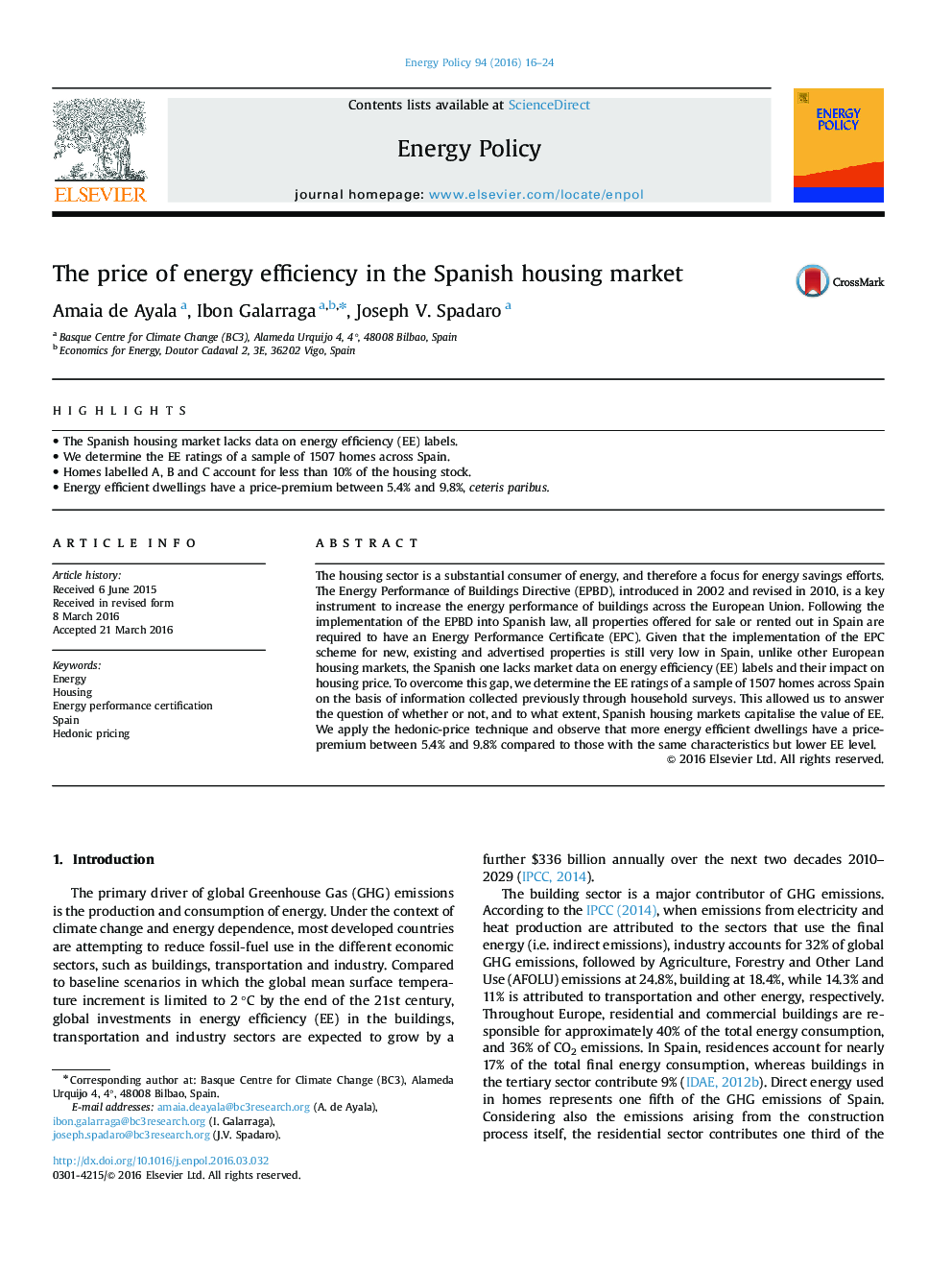| Article ID | Journal | Published Year | Pages | File Type |
|---|---|---|---|---|
| 7399396 | Energy Policy | 2016 | 9 Pages |
Abstract
The housing sector is a substantial consumer of energy, and therefore a focus for energy savings efforts. The Energy Performance of Buildings Directive (EPBD), introduced in 2002 and revised in 2010, is a key instrument to increase the energy performance of buildings across the European Union. Following the implementation of the EPBD into Spanish law, all properties offered for sale or rented out in Spain are required to have an Energy Performance Certificate (EPC). Given that the implementation of the EPC scheme for new, existing and advertised properties is still very low in Spain, unlike other European housing markets, the Spanish one lacks market data on energy efficiency (EE) labels and their impact on housing price. To overcome this gap, we determine the EE ratings of a sample of 1507 homes across Spain on the basis of information collected previously through household surveys. This allowed us to answer the question of whether or not, and to what extent, Spanish housing markets capitalise the value of EE. We apply the hedonic-price technique and observe that more energy efficient dwellings have a price-premium between 5.4% and 9.8% compared to those with the same characteristics but lower EE level.
Keywords
Related Topics
Physical Sciences and Engineering
Energy
Energy Engineering and Power Technology
Authors
Amaia de Ayala, Ibon Galarraga, Joseph V. Spadaro,
